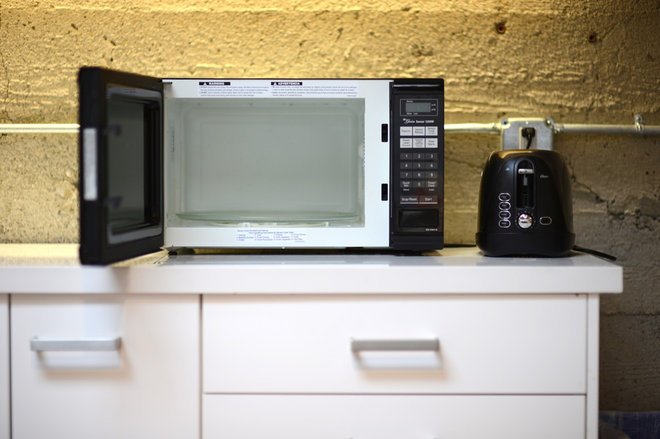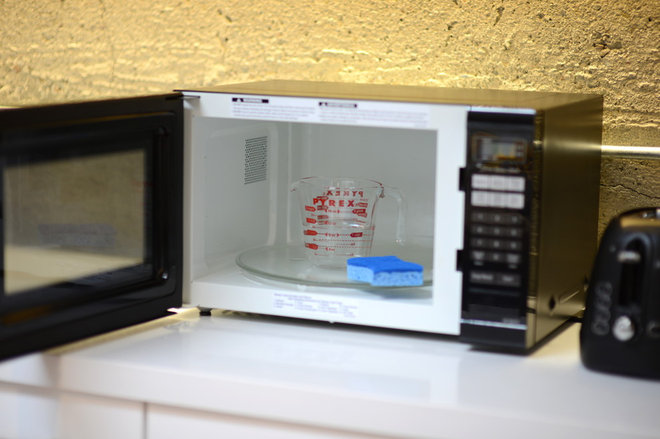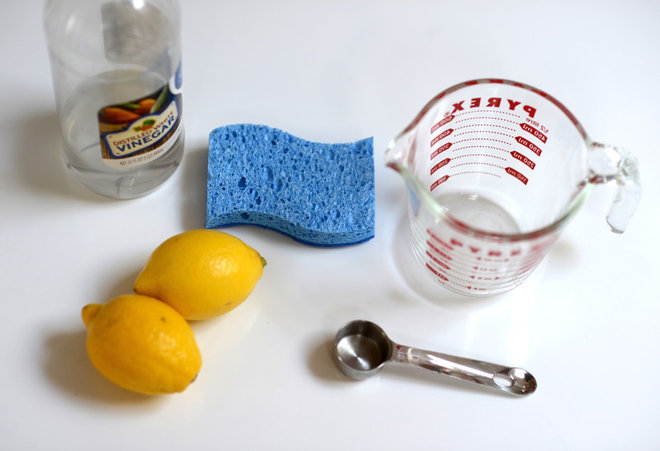You can remove odors and disinfect during this process as well, according to Meg Roberts, president of the housekeeping service Molly Maid. Start by adding half a fresh lemon to your cup of water while it’s heating up. The lemon half will be hot when removed, but once it cools down a bit, run it through the garbage disposal to freshen that as well.
Follow up by using white vinegar as a natural disinfectant. Dip a microfiber cloth in a 50-50 water-vinegar solution, wring it out until it is slightly damp and use it to wipe down the surfaces.
In most cases, this will be enough to leave your microwave’s interior sparkling. If there are still some splatters, just repeat the process.
Finishing up. Clean the turntable you removed earlier. Almost all turntables are dishwasher-safe, but if you’re not sure about yours or you doubt your microwave could be out of commission for the length of a dishwasher run, you can clean it with warm water and dish soap.
Wipe the rubber gaskets with a damp cloth too. A damp cloth is also a good choice for wiping down the glass door, but if the door is very greasy, use a 50-50 water-and-white-vinegar solution or glass cleaner. For a polished look, wipe everything dry with a soft, dry cloth.
Finally, wipe down the outer surfaces, including the instrument panel, with a soft, damp cloth. If things are particularly greasy or covered in fingerprints, go over them again with the water-vinegar solution.You can dry the surface with a soft cloth for an even more polished look.
Carpenter recommends steam-cleaning the microwave’s interior once every week or so, but this method works even if you go longer between cleanings. And if you’re vacuuming your refrigerator vents, do your microwave vents at the same time. Your microwave will appreciate it.





